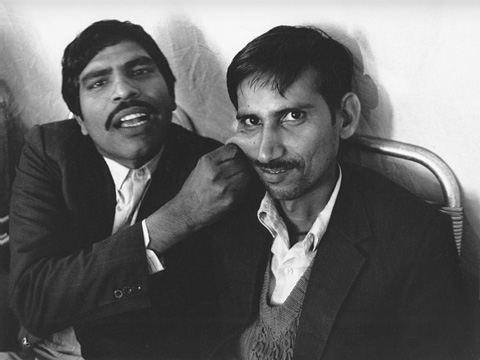    |
|||
|
|
At the first superficial glance, it does not appear that AIDS constitutes a major problem in India or New Delhi. In New Delhi, a city that supports a population of 14.1 million, 2,759 AIDS cases do not form an impressive number. (Delhi state Aids society) The news coverage of the disease renders an image of AIDS as a disease that affects foreign lands, and social lepers. So far, in the year 2007, the only two articles written about AIDS in Hindi, the native and most prevalent language in northern India, have been published by BBC, British Broadcast Corporation Hindi. Since the year 2001 BBC has published about 200 articles concerning AIDS and related matters. The very first article that associated AIDS with a defined group of people read, “Truck Driver: Virus ke Vahak” which identified truck drivers as the transmitters of a virus. The article went on to include female sexual workers as another high risk group. The ‘virus’ was described as a disease that was spread widely in Africa and Thailand, and had the potential of spreading in India. Six years later, the latest Hindi-written article published on January 14, 2007 still lists AIDS as a disease that focuses on the red light district, female sexual workers, and their clientele. In short, media coverage on AIDS, in Hindi, is either completely absent or featured as a disease that does not affect the normal, everyday people of India. By the year 1990 the rates for HIV infections in sex-workers and STD clinic attendants were already over five percent. (India at a Glance) Yet articles about AIDS and HIV appeared for the first time in India in 1997, and only in BBC international. In 1997, BBC published three articles on AIDS in India, all written in English. One boasted that scientists in India had developed drugs that could combat HIV. Another compared and declared Hepatitis B as a problem that required a lot more attention than AIDS in India. The third mentioned the newly developed ‘two minute HIV test’, which was a simple, fast and cheap test to detect the HIV virus. The Times of India printed its first article in 2001, connecting HIV and transmission through infected blood supply. (THE TIMES OF INDIA) AIDS does not get mentioned, in Hindustan Times, the single largest English daily edition in the country with a circulation of over a million, till the year 2004. Hindustan Times is also the largest and most widely read newspaper in Delhi. (Hindustan Times ) Despite there being more coverage of AIDS and HIV in English papers of India, the target audience of such papers - the middle and the upper middle class urbanites, are led to believe that the ‘disease’ is something that will never affect their daily lives. Today many plans of action against ‘rapidly growing disease’ are reported, yet data about success rates or implementation of such plans is often unavailable.
|
||


